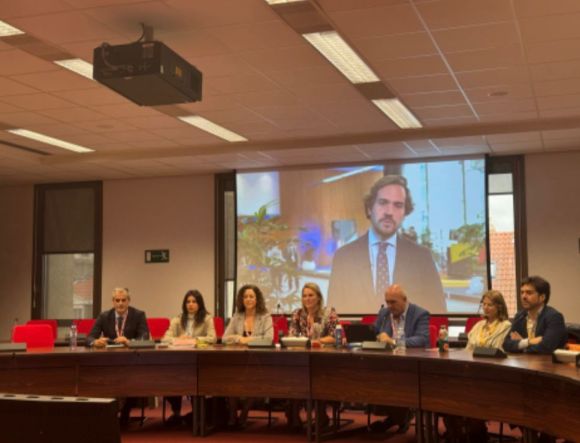
Accelerating EU Regional Reskilling through talent promotion. Picture: Adelina Lambreva.
The EU is a mosaic of 242 regions that all face at some point issues like an aging population, the brain drain of young people, and a disbalance between the offered jobs and the skills of the working force. This observation has led to the session Accelerating EU Regional Reskilling through talent promotion.
In the audience, there were three dozen people working throughout the EU on a regional level who were eager to learn how they can make their region more attractive to young talents. In this context, “a talent” refers to individuals equipped with the necessary skills and competencies to contribute to regional development, especially in addressing the demographic challenges of aging populations and brain drain. The EU recognizes that many regions are falling into a "talent development trap" where they struggle to retain or attract highly skilled individuals due to a skills mismatch and the declining tertiary-educated population.
The guides of the event: the speakers
The speakers were key EU actors focused on regional talent attractiveness. Ana Sanz, Director-General for SMEs and the Self-Employed at the Aragon Government, presented the “Conecta Talento” initiative, designed to attract, retain, and develop talent by connecting professionals with opportunities. Javier Martínez, Director of CEEI Aragón, discussed making Aragón a technology hub through innovation and entrepreneurship. José Antonio Ondiviela, a Strategy Senior Advisor from European Smart Cities, contributed his expertise on smart city strategies for attracting skilled professionals. Cinzia Dellagiacoma, Project Manager at the Association of European Border Regions (AEBR), highlighted the importance of cross-border cooperation in enhancing talent mobility and cohesion. The speakers shared innovative strategies to boost regional talent attraction, reskilling, and retention.
Attracting talent: lovable cities and cross-border cooperation
Attracting talent requires a balance of emotional appeal and practical benefits, as highlighted by José Antonio Ondiviela. Cities must be “lovable,” offering beauty, cultural life, and a sense of connection, alongside practical factors like affordable housing and job opportunities. Cities like Oslo and Amsterdam are examples of this balance, making them desirable places to live and work. Cinzia Dellagiacoma added that cross-border cooperation can boost regional attractiveness, particularly in disadvantaged areas. Border regions can create dynamic labor markets by collaborating with neighboring countries, reducing brain drain. Initiatives like the Interreg program, which supports bilingual education and entrepreneurship, help foster a multilingual workforce and increase economic opportunities.
Fixing the talent mismatch: Aragón’s strategy to bridge the gap
Ana Sanz addressed Aragón’s challenges, including an aging population, brain drain, and skills mismatch. The “Conecta Talento” initiative aims to reduce this gap by offering micro-ECTS credits to align education with industry needs. This ensures that young professionals acquire the exact skills businesses require. Sanz also emphasized the importance of affordable housing and cross-border collaboration to attract and retain talent. The government aims to create an environment where people can both work and build a life, helping reduce the region’s talent drain and fostering innovation and entrepreneurship.
By Adelina Lambreva



